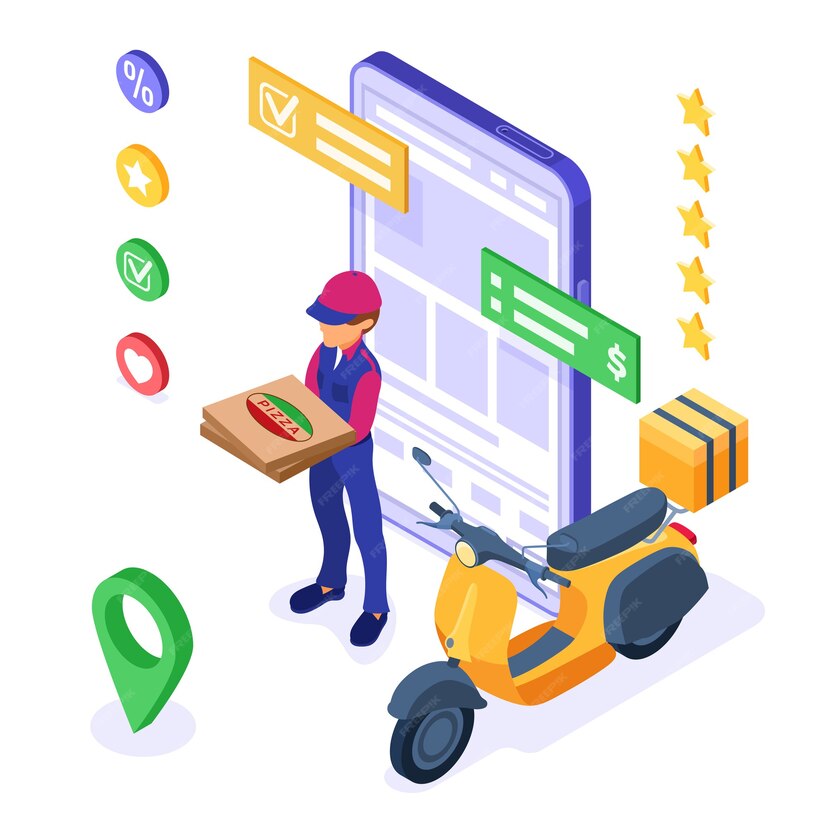
The ease of having items delivered right to our doorsteps is what drives the continued growth in demand for delivery services in 2024. Delivery applications are becoming a necessary part of our everyday life, whether it be for groceries, food, or deliveries. It might be quite profitable to Develop a delivery app in the USA if you want to take advantage of this growing market. This is a step-by-step tutorial on creating a profitable delivery app in 2024.
1. Market Research and Planning
Do a comprehensive market research study before beginning the development process. Know your competitors, the demands of your customers, and the current trends. Determine what needs your app can fill in the market. What should be planned includes:
- Defining your target audience
- Analyzing competitors
- Identifying unique selling propositions (USPs)
- Creating a detailed business plan
2. Choosing the Right Platform
Choose between creating a cross-platform app and a native app for iOS or Android. Although they need to be developed separately for each platform, native apps provide superior performance and user experience. By utilizing a single codebase across platforms, cross-platform apps developed with frameworks like Flutter or React Native can reduce development time and expenses.
3. Essential Features to Include
To compete in the crowded delivery app market, your app must have certain essential features:
- User Registration and Profile Management: Easy sign-up and profile management.
- Search and Filter Options: Allow users to search and filter products or services.
- Real-Time Tracking: Users should be able to track their orders in real-time.
- Payment Gateway Integration: Secure and multiple payment options.
- Order Management: Easy order placement, modification, and cancellation.
- Push Notifications: Keep users informed about their order status and promotions.
- Ratings and Reviews: Enable users to rate and review their delivery experience.
4. Technology Stack
Selecting the right technology stack is crucial for the performance and scalability of your app. Commonly used technologies include:
- Front-end: React Native, Flutter
- Back-end: Node.js, Ruby on Rails
- Database: MongoDB, PostgreSQL
- Payment Gateway: Stripe, PayPal
- Real-Time Tracking: Google Maps API, Mapbox
5. Design and User Experience
A well-designed interface is essential to the app’s success. Pay attention to easy-to-use navigation, eye-catching graphics, and a smooth user experience. Employ UI/UX designers with experience to produce an interface that engages users and increases satisfaction.
6. Development Process
The development process involves:
- Prototyping: Create wireframes and prototypes to visualize the app.
- Development: Build the front-end and back-end of the app.
- Testing: Conduct thorough testing to identify and fix bugs. Include beta testing to gather user feedback.
- Deployment: Launch the app on the App Store and Google Play Store.
7. Compliance and Security
Make that your app complies with all applicable rules and regulations, such as the CCPA and GDPR, which protect user privacy. Use strong security measures, such encryption and secure payment channels, to safeguard user data.
8. Marketing and Launch
A solid marketing plan is necessary for a launch to be successful. Use internet advertising, influencer marketing, and social media to generate talk about your app. To draw in early adopters, provide discounts or promotions.
9. Maintenance and Updates
Once your app is live, keep an eye on its functionality and customer reviews. To keep users happy and interested, update the app frequently with new features, enhancements, and security updates.
Conclusion
In the USA, creating a delivery app in 2024 requires thorough preparation, the appropriate tech stack, and a user-centered design process. You may develop a successful delivery app that satisfies user needs and meets market demands by following these steps. Customers looking for efficiency and convenience may find your app to be a necessary resource as the market for delivery services expands.